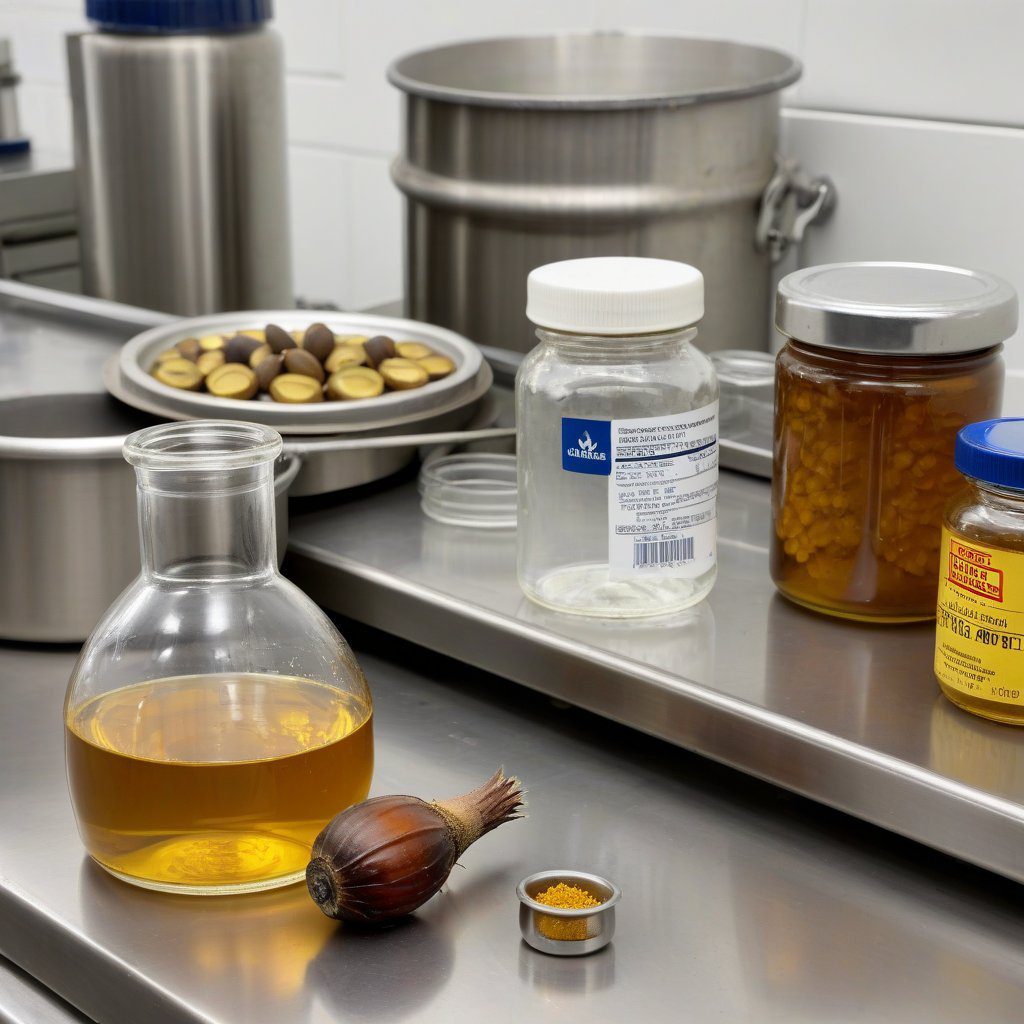What are the current market trends for glycerol? Understanding these trends is crucial for industries looking to source glycerol effectively.
What are the current market trends for glycerol? In this post, we will delve into the latest developments and insights that shape the glycerol market. From manufacturing innovations to shifts in demand across various sectors, this article promises to equip you with valuable knowledge.
Discover how these trends can impact your sourcing decisions and why choosing a trusted supplier like Diplomata Comercial can enhance your business strategy. Stay ahead of the competition by learning what’s happening in the glycerol landscape today.

What Are the Current Market Trends for Glycerol?
Glycerol, also known as glycerin, is a colorless and odorless liquid that is widely used across various industries. It has unique chemical properties that make it a versatile ingredient in pharmaceuticals, cosmetics, and food production. Understanding glycerol’s production methods and purity levels is essential for grasping current market trends.
The production of glycerol primarily involves the processing of fats and oils. Glycerol can be derived from both biodiesel production and the hydrolysis of natural fats. Additionally, the importance of purity levels cannot be overstated; higher purity glycerol is often required for pharmaceuticals, while industrial applications may accept lower purity.
The Importance of Glycerol in Today’s Market
Glycerol plays a crucial role in today’s market due to its extensive applications. In the pharmaceutical industry, it serves as a solvent and sweetener, while in cosmetics, it acts as a moisturizer and humectant. The food industry utilizes glycerol as a sweetener and preservative, further emphasizing its versatility.
Moreover, the demand for glycerol is on the rise, particularly as industries focus on sustainability. Companies are increasingly seeking glycerol to enhance product formulations, reduce environmental impact, and innovate within their sectors. This trend highlights the significance of having a reliable glycerol supplier to ensure consistent quality and supply.
Evaluating Glycerol Suppliers: Key Selection Criteria
When selecting a bulk glycerol supplier, companies should consider several key criteria. Quality assurance is paramount; suppliers must meet stringent certification standards to ensure product reliability. It’s essential to evaluate the purity levels offered and whether they align with industry requirements.
Pricing strategies should also be examined. Understanding the market trends can help businesses negotiate better terms and avoid overpaying. Furthermore, supplier reliability is crucial; a supplier’s past performance can provide insights into their ability to deliver consistently.
Steps to Source Glycerol: A Practical Guide
Sourcing glycerol effectively involves a systematic approach. Start by conducting thorough market research to identify potential suppliers. Look for industrial glycerol suppliers with a proven track record and positive customer feedback.
Once potential suppliers are identified, it’s vital to initiate contact to gather information on pricing and availability. Don’t hesitate to negotiate contracts that reflect current market trends. This ensures a fair deal while securing a consistent supply chain.
Advanced Strategies for Maximizing Glycerol Supply Efficiency
To optimize glycerol supply chains, companies should adopt advanced techniques. Effective inventory management is essential for minimizing costs. Implementing forecasting demand strategies can help predict future needs and prevent stockouts.
Additionally, exploring alternative sourcing options can mitigate risks associated with supply chain disruptions. Diversifying your supplier base ensures that your company is less reliant on a single source, which is especially important in volatile market conditions.
Avoiding Pitfalls: Common Mistakes in Glycerol Procurement
Businesses often encounter pitfalls when sourcing glycerol. One common mistake is over-relying on a single supplier, which can lead to vulnerabilities. It’s crucial to diversify suppliers to avoid disruptions.
Neglecting quality checks can also have severe repercussions. Companies should regularly assess the quality of glycerol they receive, ensuring it meets the necessary industry standards. Staying informed about market trends helps businesses make proactive decisions and avoid potential issues.
Addressing Industry-Specific Concerns
For instance, a small cosmetics manufacturer struggling to find reliable suppliers can assess current market trends by monitoring pricing fluctuations and supplier certifications. Understanding the landscape is vital for making informed decisions when considering switching suppliers.
An entrepreneur looking to launch a new food product should analyze glycerol’s market availability and pricing trends. Exploring multiple sourcing options can help ensure a steady supply despite market volatility.
In the pharmaceutical sector, companies evaluating glycerol for formulations can gather insights on supply chain disruptions by reviewing industry reports. Understanding these trends will help mitigate risks and ensure smooth production timelines.
Researchers studying glycerol’s application in bioplastics should seek out reliable data sources, including market analysis reports and industry publications. This information can support funding proposals and validate their research.
Lastly, local retailers interested in stocking glycerol-based products should analyze consumer demand through market studies. Understanding market dynamics will determine if it’s a viable investment for their store.
Why Choose Diplomata Comercial?
With over 20 years of experience in the chemical market, Diplomata Comercial is a trusted glycerol supplier in Brazil. Our commitment to quality ensures that we provide high-quality glycerol suitable for various applications, including pharmaceutical and cosmetic industries.
Located in Barueri, SP, we pride ourselves on our in-house manufacturing capabilities and continuous supply of crude, refined, and industrial-grade glycerol. Our certifications as a reputable supplier validate our dedication to excellence in customer service and product quality.
How Can I Help You
As we navigate the dynamic landscape of glycerol market trends, it’s essential to recognize how these shifts can impact your business. At DIPLOMATA, with over 20 years of experience in the chemical industry, we understand the nuances of this sector. The demand for glycerol is on the rise, particularly in industries such as HPPC and pharmaceuticals, where high-quality and refined products are paramount.
Our commitment to excellence ensures that we provide only superior materials, tailored to meet your specific needs. We take pride in our quick and attentive customer service, always aiming to exceed expectations.
As a renowned supplier with a well-established manufacturing facility, we are positioned to support you with our extensive range of glycerin products, including both crude and refined glycerin. Whether you’re looking for sustainable sourcing or high-performance ingredients, we’re here to help you navigate these trends with confidence.
Join us in exploring these opportunities together, as we continue to contribute positively to the industry and the environment.
FAQ
What are the key factors driving the current demand for glycerol in various industries?
The demand for glycerol is currently driven by several key factors, including its increasing usage in the food and beverage industry as a sweetener and preservative, as well as its role in pharmaceuticals and personal care products. Additionally, the growing trend towards sustainability and the use of bio-based products have further amplified glycerol’s appeal, particularly in the cosmetics sector. As consumers become more health-conscious and environmentally aware, industries are adapting by incorporating glycerol into their formulations, creating a significant upward trend in demand.
How is the glycerol market affected by the rise of biofuels and biodiesel production?
The glycerol market is significantly influenced by the rise of biofuels and biodiesel production, as glycerol is a byproduct of the biodiesel manufacturing process. As the biodiesel industry expands due to increasing regulations and consumer preferences for renewable energy sources, the supply of glycerol has also increased. This surplus can lead to price fluctuations in the glycerol market, impacting its availability and competitiveness. Companies in the glycerol market must adapt by exploring new applications and markets for glycerol to mitigate potential oversupply and maintain profitability.
What are the emerging applications of glycerol that could shape future market trends?
Emerging applications of glycerol are shaping future market trends significantly. Beyond traditional uses in food and pharmaceuticals, glycerol is gaining traction in the production of bioplastics, as a solvent in chemical manufacturing, and in the formulation of eco-friendly cosmetics. Additionally, glycerol’s role in the energy sector, particularly in developing energy storage systems, is becoming more prominent. As innovation continues to drive new uses for glycerol, its versatility will likely catalyze further market growth and diversification.
What challenges do manufacturers face in the glycerol market today?
Manufacturers in the glycerol market face several challenges today, including fluctuating raw material prices and increased competition from synthetic alternatives. Supply chain disruptions, particularly due to global events, can also impact production efficiency and cost structures. Additionally, the need for compliance with evolving regulations related to sustainability and product safety creates pressure on manufacturers to innovate and adapt. To remain competitive, companies must invest in technological advancements and sustainable practices while navigating these challenges effectively.
How are consumer preferences influencing glycerol market trends?
Consumer preferences are profoundly influencing glycerol market trends, particularly as health and wellness become top priorities. There is a noticeable shift towards natural and organic products, prompting manufacturers to seek glycerol as a safer, plant-based ingredient in cosmetics, food, and pharmaceuticals. Additionally, consumers are increasingly interested in transparency regarding ingredient sourcing and sustainability, which drives demand for high-quality, responsibly produced glycerol. Companies that align their products with these consumer values are likely to see greater market success.
What is the outlook for glycerol pricing in the near future?
The outlook for glycerol pricing in the near future is contingent on several factors, including raw material availability, production costs, and market demand shifts. As biodiesel production continues to rise, the supply dynamics of glycerol may lead to price stabilization or even reduction. However, if demand in emerging sectors, such as bioplastics and personal care, outpaces supply, prices could rise. Market players should closely monitor these trends and be prepared to adjust their strategies accordingly to mitigate risks and capitalize on opportunities.
What role does technological advancement play in the glycerol market?
Technological advancement plays a crucial role in the glycerol market by enhancing production efficiency and creating innovative applications. New extraction and purification technologies are improving the quality and yield of glycerol, making it more cost-effective for manufacturers. Moreover, research into alternative uses, such as glycerol-based biofuels and biodegradable materials, is expanding the market’s scope. Embracing technology enables companies to stay competitive, respond to consumer demands, and contribute to sustainable practices within the glycerol industry.





